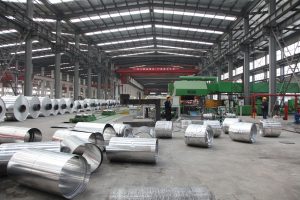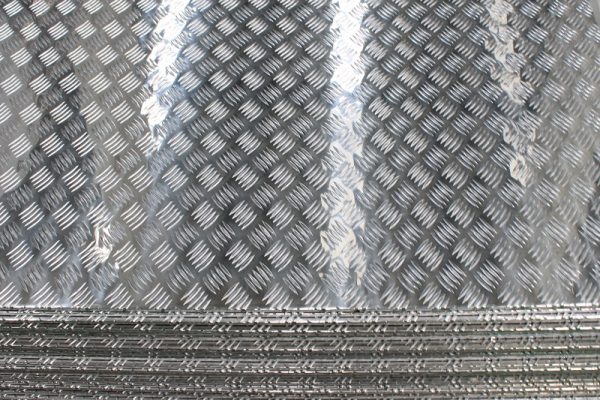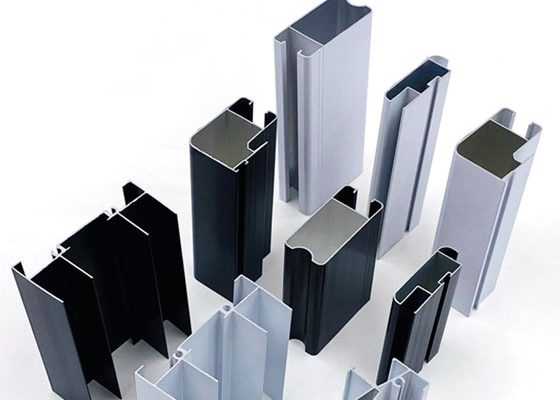Aluminium is a silvery-white metal that is lightweight and has good ductility, electrical conductivity, przewodność cieplna, wytrzymałość cieplna, and radiation resistance. A dense oxide film will form on the surface of aluminum in the air, so that aluminum has good corrosion resistance. The aluminum products that we usually see have been oxidized.
Because of its rich content and good performance, aluminum is often made into rods, flakes, folie, powders, ribbons and filaments, and is widely used in important industrial fields such as aviation, budowa, samochody, and electric power.
Aluminum has the highest recyclability and highest regeneration efficiency of any structural metal used in industry. Due to the high corrosion resistance of aluminum, except for some aluminum chemical containers and devices, aluminum products are basically not corroded during their use, and almost all of them can be recycled. And the actual production energy consumption of recycled aluminum does not exceed 5% of the energy consumption of electrolytic aluminum. W związku z tym, recycling and recycling waste aluminum is an energy-saving project with huge benefits. According to data released by the U.S. Geological Survey in 2013, the amount of recycled aluminum in the United States in 2012 was 3.4 million tons, z którego 53% came from waste scraps generated during the production process, i 47% came from aluminum-containing waste products; recycled aluminum products accounted for the total aluminum consumption market. 35% of the amount.
Industrial pure aluminum is generally defined as aluminum with a purity of 99.0% do 99.9%, and in China it is defined as aluminum with a purity of 98.8% do 99.7%. China’s plastic deformation processing industry pure aluminum grades are 1080, 1080ZA, 1070, 1070ZA (L1), 1370, 1060 (L2), 1050, 1050ZA (L3), 1A50 (LB2), 1350, 1145, 1035 (L4), 1A30 ( L4-1), 1100(L5-1), 1200(L-5), 1235, itp.
Przemysłowe czyste aluminium ma ogólne właściwości aluminium, niska gęstość, dobre przewodnictwo elektryczne i cieplne, dobra odporność na korozję, dobra wydajność przetwarzania tworzyw sztucznych, można przerobić na talerze, paski, folie i wyroby ekstrudowane, itp., and can be used for gas welding, argon arc welding, spot welding. Industrial pure aluminum cannot be strengthened by heat treatment, but its strength can be improved by cold deformation. The only form of heat treatment is annealing. The recrystallization starting temperature is related to the impurity content and deformation degree, generally around 200°C
Aluminum can be cast by any of the casting methods. Aluminum has good plasticity and can be rolled into thin plates and foils; drawn into pipes and filaments; extruded into various civil profiles; it can be turned, milled, bored, planed, itp. at the maximum speed that most machine tools can achieve.
The surface of aluminum and its alloys is easy to form a dense and firm AL2O3 protective film. This protective film will only be destroyed under the intense action of halogen ions or alkali ions. W związku z tym, aluminum has good resistance to atmospheric (including industrial atmosphere and marine atmosphere) corrosion and water corrosion. It can resist the corrosion of most acids and organic substances, and the use of corrosion inhibitor can resist the corrosion of weak alkali; the use of protective measures can improve the corrosion resistance of aluminum alloy.
The electrical and thermal conductivity of aluminum is second only to silver, copper and gold. At room temperature, the equivalent volume conductivity of electrical aluminum can reach 62% IACS, and if calculated according to the conductivity per unit mass, its conductivity is twice that of copper.
The reflectivity of the polished surface of aluminum to white light is more than 80%, and the higher the purity, the higher the reflectivity. W tym samym czasie, aluminum has good reflective properties for infrared rays, ultraviolet rays, electromagnetic waves, heat radiation, itp.
Industrial pure aluminium has a wide range of uses, and can be used as electrical aluminum, such as bus bars, przewody, cables, and electronic parts; as heat exchangers, coolers, and chemical equipment; packaging supplies for food and medicine such as tobacco, tea, and sugar, and beer barrels, itp. Deep drawing products; used in buildings as roof panels, sufity, ścianki działowe, sound-absorbing and heat-insulating materials, as well as household appliances, przybory kuchenne, itp.

Chińska fabryka blach aluminiowych
Aluminium materials are used in aerospace, navigation, lotnictwo, samochody, transport, mosty,Budowa, electronics and electricity, energy and power, metallurgy and chemical industry, agricultural drainage and irrigation, machinery manufacturing, packaging anticorrosion, electrical furniture, daily use.



